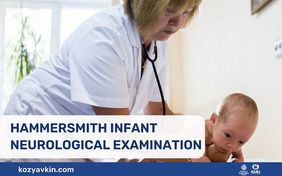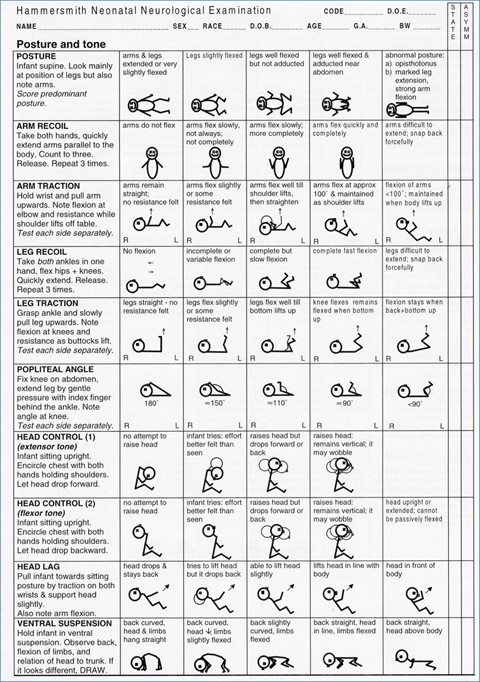It is practical, quick and easy to perform exam, designed for premature babies and infants aged 3 to 24 months.
HINE results can be used to enable detection of high risk of cerebral palsy (CP) at an early age and to predict the type and severity of the lesion, as well as independent sitting and walking in children with CP. HINE has been standardised in large cohorts of typically developing children and in children with neurological diseases. It is recommended for use in clinical practice and research.
It was initially developed by Dr Lilly Dubowitz and prof Victor Dubowitz in 1981. In 1998 Dr Eugenio Mercuri had updated and improved the evaluation methodology.
The examination lasts 10-15 minutes on average.
The test includes neurological examination (positions, cranial nerve functions, reflexes, tone, movements), assessment of motor functions (head control, sitting, walking, crawling, turning, grasping) and behaviour (consciousness, social orientation, emotional state).
The neurological examination consists of 26 items, that are divided into 5 categories and assess the functions of the cranial nerves, body posture, movement, tone, reflexes, and reactions. Each item is evaluated on a four-point scale with a mandatory indication of the asymmetries observed during the examination.
The stages of a child's motor development are assessed separately, indicating the age at which a certain degree of development of motor skills, such as head control, grasping, sitting, crawling, turning, standing, and walking, has been reached.
The last section includes an assessment of the behaviour, particularly the state of consciousness, emotional state, and social orientation of the baby.
The results of exams are easily recorded on standardised proformas, simplifying the documentation of findings and comparison between sequential exams. The results can be classified into optimal and suboptimal neuromotor categories.
The proforma has been translated into many languages. The Ukrainian translation was performed by the team of Kozyavkin International Rehabilitation Clinic. The proformas can be downloaded at this page.
No special certification is required to perform the examination. You can watch training videos with the examination methodology by the link.


